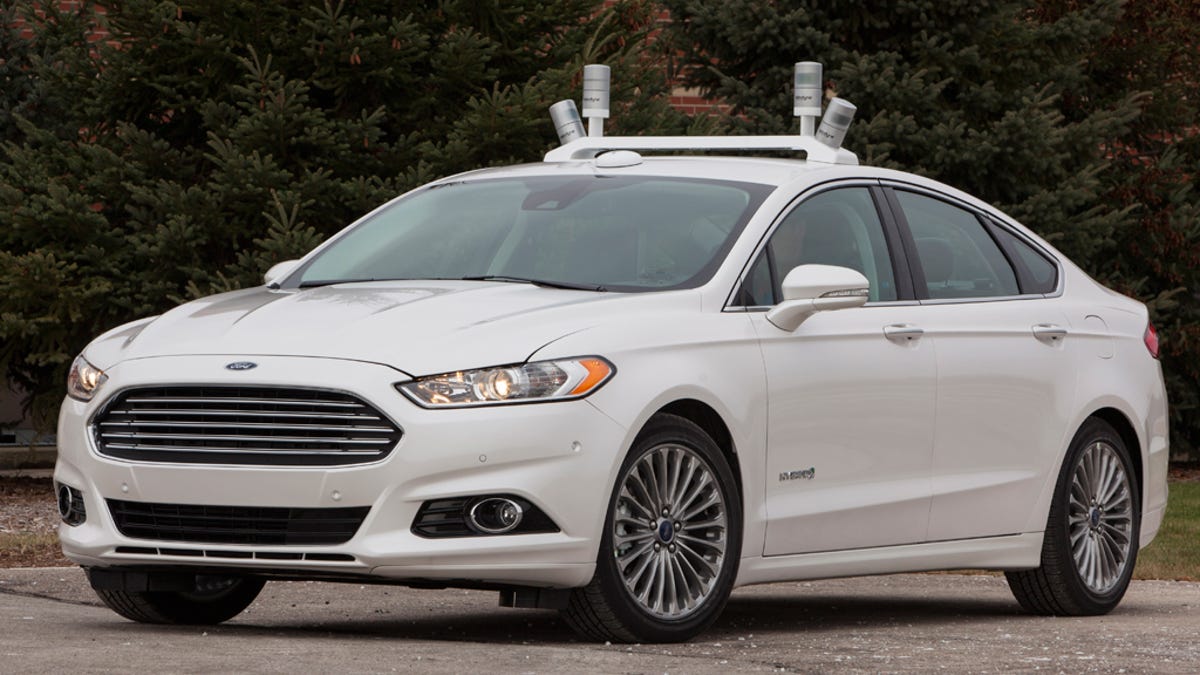Ford's self-driving car unveils itself
Well, not exactly. The prototype can't quite manage its own public relations yet, but it can, apparently, "see" in the same way a bat or dolphin can.

In the future, Mustang Sally might be a robot.
Ford Motor unveiled its first self-driving car this week -- well, a prototype anyway. The Automated Fusion Hybrid Research Vehicle, developed with the University of Michigan and State Farm insurers, will help the storied US automaker "test the limits of full automation and determine the appropriate levels for near- and mid-term deployment," Raj Nair, group vice president, Ford global product development, said in a statement.
Ford's 2013 Fusion already offers adaptive cruise control, which can bring the car to a full stop, and a lane-keeping system that steers the car back into its lane if a driver lets it drift. It can also parallel park automatically. But the research vehicle takes things to the next level -- according to the statement from Ford, the car:
...adds four scanning infrared light sensors -- named LiDAR (for Light Detection And Ranging) -- that scan the road at 2.5 million times per second. LiDAR uses light in the same way a bat or dolphin uses sound waves, and can bounce infrared light off everything within 200 feet to generate a real-time 3D map of the surrounding environment.
The sensors can track anything dense enough to redirect light -- whether stationary objects, or moving objects such as vehicles, pedestrians, and bicyclists. The sensors are so sensitive they can sense the difference between a paper bag and a small animal at nearly a football field away.
That's presumably good news for the chicken crossing the road. Unless, of course, it's wearing a bag over its head.
The University of Michigan's robotics and automation research team is working on the sensors, and State Farm is helping Ford figure out if driver-assist systems can help cut down on the number of rear-end collisions.
Here's an overview video from Ford:

